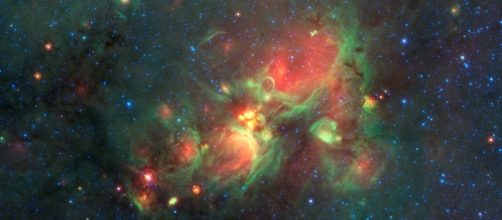A team of researchers from the University of Minnesota School of physics constructed models and information from meteorites to conclude that a Supernova of a small mass could have triggered the formation of the Solar system. They found that certain types of nuclei present in meteorites could have been left there as byproducts of supernova explosion. To corroborate their findings, scientists need to study other types of nuclei produced in meteorites. This will give them more accurate clues for the conclusion of their experiments.
Formation of the solar system
The system in which our eight planets and the sun lie (the solar system) it´s believed to have been formed around 4.5 billion years ago, when a large molecular cloud underwent gravitational collapse. The hydrogen, helium and traces of other elements condensed around a protostar, creating a hot a fast rotating disk. The planets formed by accruing matter from this disk. Over time the new formed planets attracted each other, accruing more matter and growing bigger.
Evidence on meteorites
Based on the results of their investigations, scientists conclude that the short-lived nuclei present in the early solar system could only have originated from the explosion of a supernova.
Their abundances have been deduced from the decay products present in meteorites. In the same way that bricks are the remaining pieces of a building, meteorites are for the solar system, thus, they can tell what the solar system is made of and what kind of nuclei existed during the explosive event.
Short-lived nuclei-Beryllium-10
The study was concentrated on a supernova event of more than 12 times the mass of the sun. Scientists started by examining Beryllium-10- a short-lived nuclear particle containing 4 protons and and 6 neutrons at 10 mass units. This type of nuclei is abundant in meteorites. Using new models, scientists have proved that beryllium 10 can be produced in both supernovae of high and low masses, although only a low mass supernovae event matches the records found in meteorites.
While the study opens new perspectives for the formation of the solar system by explaining the abundance of Beryllium-10, it would also explain the abundances of other short-lived nuclei, such as Palladium-107 and Calcium-41, along with some others present in meteorites.
Scientists pretend to validate their theory by studying Lithium-7 and Boron-1, which along with Beryllium-10 are generated in low mass supernovae through neutrino spallation.

